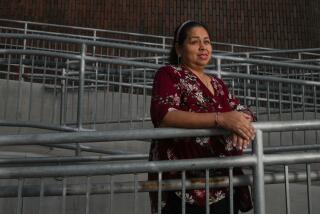Tests Count, but Class Participation Also Helps Students Make the Grade
- Share via
The first report cards are out, and as always, questions are surfacing about how the grades are calculated.
There are the obvious factors such as test scores, essays, quizzes and homework that go into a grade. But along with those primary considerations, many teachers also include something known as class participation, which can count anywhere from 10% to 33% of the grade.
If a grade is supposed to measure what a student has learned, why not just stick to tests, homework and essays? The reason is that other important learning takes place everyday in a classroom that is not typically measured in traditional ways.
Much of school involves the presentation of material and students interacting with that material. As part of the daily demand for active engagement, teachers expect students to ask questions, voice comments and draw comparisons. It is in this give-and-take atmosphere that crucial learning takes place, not all of which is evaluated by a test or an essay. Class participation points allow a teacher to give credit for this type of learning.
It is usually clear who is participating during a typical class discussion because the more extroverted students tend to dominate. However, there are other ways a teacher may ascertain participation and learning that are not quite so obvious and may appeal to those students who are a bit overwhelmed in a class of 35.
For example, the way students respond to test results says a lot about what those students ultimately learn from their mistakes. If a student merely registers the grade, looks bewildered and dumps the test in the trash, most likely he or she will not learn anything more from that exam. But if the student asks the teacher why the answer to No. 7 was wrong or how come the short answer to No. 12 was incomplete, a good deal more learning may take place. Most teachers spend a lot of time creating tests and grading them, and they note when students spend a decent amount of time responding to those marks.
The same holds true on graded written work such as essays, book reports, projects and journals. A lot of teachers carry stacks of these around almost endlessly from September until June. Teachers hope that somehow the comments and corrections carefully scrawled onto the countless papers will improve student thinking and writing. There’s no way teachers would spend so much time on that activity if they didn’t believe that somehow, at least for some students, it was going to make a difference. The hope is that students will have an “Aha! I now understand!” experience.
Obviously there is much to be learned from teachers’ comments if students will only read them carefully and take them to heart. But first the student must understand the remarks, and many times that requires a discussion with the teacher. A conference like that, however brief, can’t help but result in increased knowledge of the subject at hand. It’s one more way for a teacher to observe a student actually in the process of learning. And it’s one more bit of information that may affect that final grade.
Other indications of student comprehension are comments, questions and reflections made about the material, but not necessarily restricted to formal class discussion. Such types of participation may occur on any number of occasions: a question before class (“Why do we hear so little about the bomb dropped on Nagasaki?”); a comment on the way out the door (“Do you think something like the Salem witch trials could happen now?”); a personal reflection stated quietly by the teacher’s desk (“I wonder if I would have had the courage to hide Anne Frank’s family?”).
These aren’t mindless asides. They are statements that get to the very root of the subject. Students who express such thinking are obviously learning.
So when teachers finally write or bubble in that final grade, there’s a good chance class participation will play a significant role. Rather than bemoan a loss of points in this area, students need to find ways they can become as fully engaged in each class as the subject deserves. It’s certainly an aspect of learning that students should take seriously. Teachers do.
Christine Baron is a high school English teacher in Orange County. You may reach her at educ@latimes.com or (714) 966-4550.






